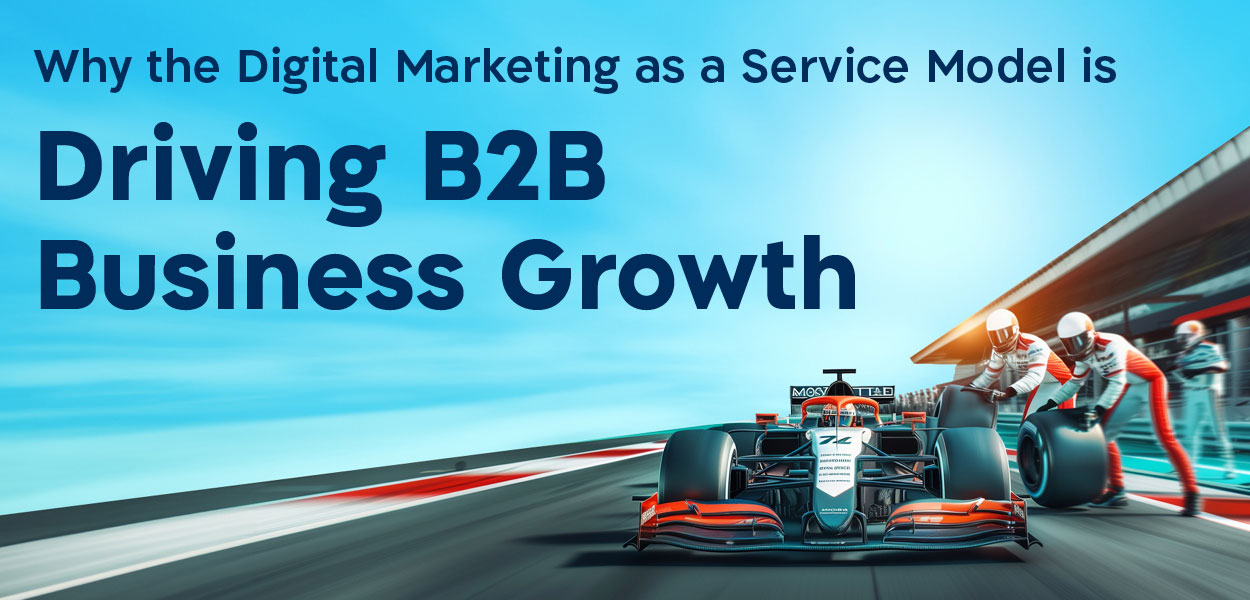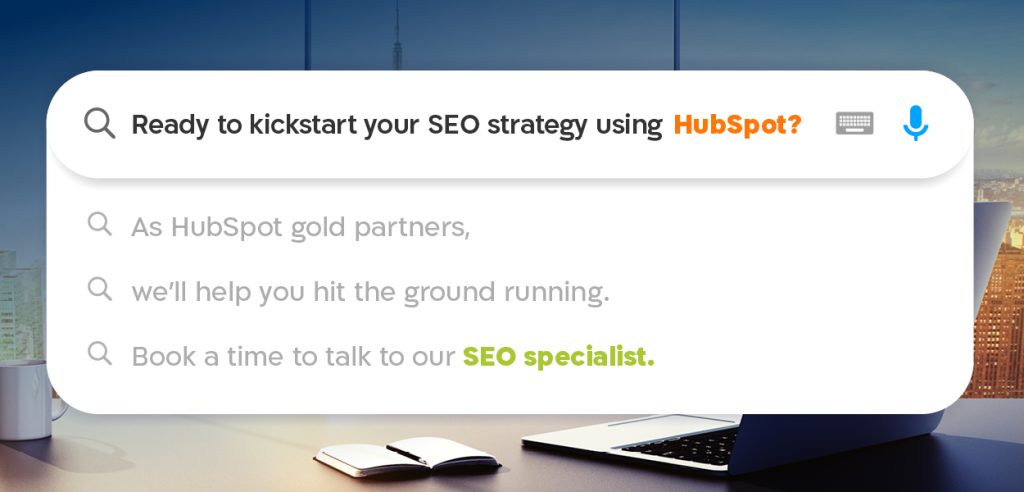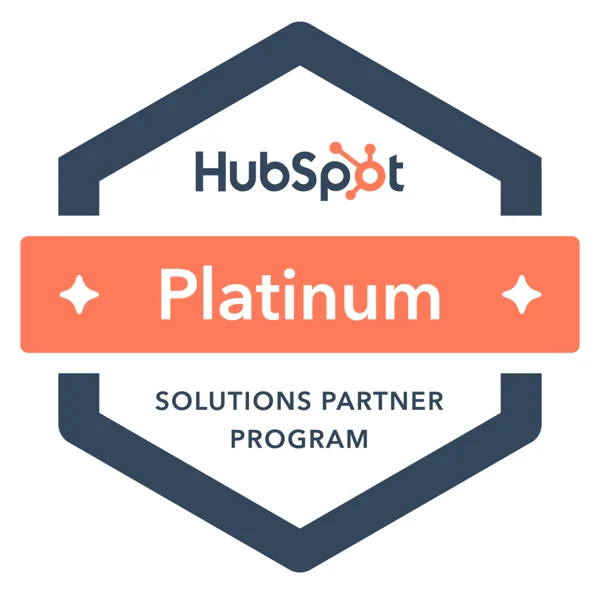The BL[OZ]
Why the Digital Marketing as a Service Model is Driving B2B Business Growth
By
Liron Ramot
, 17/06/2024
Digital marketing is essential for B2B companies to reach their target audience, generate leads, and stay competitive. Many lack the resources to handle it in-house, making outsourced digital marketing a valuable solution.
min read
Digital marketing is crucial for B2B companies to effectively reach their target audience, generate leads, make data-driven decisions, and stay competitive in the market. However, while most B2B businesses see the need for digital marketing, they don’t necessarily have the team, tools, or budget to handle it in-house.


Digital Marketing as a Service (DMaaS) is a model that works
As an on-demand model, DMaaS allows your company to access a wide range of digital marketing expertise, tools, and resources without hiring and maintaining an in-house marketing team. While digital marketing toolboxes, tactics, and strategies differ according to client needs, they frequently comprise smart content, webinars, outreach and Account-Based Marketing (ABM), Search Engine Optimization (SEO), sponsored campaigns, and marketing automation to reach target audiences and drive traffic or conversions.4 great reasons why DMaaS makes sense for your B2B business
- Access top-tier talent without the overhead costs associated with traditional hires Budget constraints and HR challenges may be standing in the way of hiring an in-house digital marketing manager. DMaaS offers a cost-effective solution, allowing your company to alleviate the burden of recruitment, training, and retention, freeing up your resources to focus on your core business operations.
- Effectively navigate the complex digital landscape Tap into the expertise of seasoned professionals who possess a comprehensive understanding of digital marketing strategies, tactics, and execution skills that can help you achieve your marketing objectives.
- Adapt to changing market conditions Your business has to constantly adapt to market needs and business growth. DMaaS has built-in flexibility, allowing your business to scale up or down, based on your changing needs and budget.
- Set goals, measure results & change the game plan as needed In the dynamic world of digital, the goalposts are constantly changing. By setting key performance indicators (KPIs) and using accessible analytics tools such as those available in HubSpot, you can easily track the success of your marketing campaigns, optimize strategies as needed, and demonstrate the value of using DMaaS services.

Follow the yellow brick road
As a global B2B marketing expert, OZ has spent years building a strong reputation. Digital trends may come and go, but dedication, commitment to success, experience, and professionalism never go out of fashion. At OZ, we believe that long-lasting partnerships are based on deep listening, understanding, and transforming your goals into measurable results. That’s why many of our clients stay with us when they move companies, and why many clients come to us by word of mouth.Your dedicated digital account manager will be your work BFF
With OZ, your account will be managed by a dedicated digital account manager backed by a multidisciplinary team with expertise in every aspect of digital marketing, and more. Your OZ manager is always backed up by a team comprising a graphic designer, strategist, and content writer. Your OZ manager becomes an integral part of your marketing team, offering full commitment and dedication to your company's goals. It's not just one person, but an entire team of digital experts working behind the scenes to drive your digital marketing success. Every member of the OZ team brings with them a high standard of professionalism and expertise gained from working with numerous B2B companies across various industries.
Boost your bottom line
DMaaS enables you to reach and engage with your target audiences effectively, measure the success of your campaigns with precision, and adapt your strategies in real time based on insights and feedback. It’s there to act as a driving force in your marketing strategy, enabling you to access the resources and expertise required to enhance your brand visibility, attract and retain customers, and drive sustainable growth.The Forgotten Digital Frontier. Marketing Beyond the Booth.
By
Rosa Rabinovich
, 17/06/2024
Discover the power of integrating digital marketing with physical trade show presence to drive better engagement, increased traffic, and quality leads. Learn actionable strategies to make your next trade show a success.
min read
How to amplify your tradeshow potential – a step-by-step guide
So, you've invested quite a bit in a stunning trade show booth. The team is buzzing with excitement expecting it to be the center of attention. Yet, when the day arrives, the anticipated crowds turn out to be rather scarce. When this happens, you've probably missed a key aspect of trade show preparation - not fully integrating digital marketing into your trade show strategy.The Challenge: Bridging the Gap to Maximize Potential
Too often, companies focus heavily on their booth's physical setup and ignore the digital engagement that goes with it. This oversight can lead to disappointing foot traffic, missed opportunities, poor engagement with potential customers, and a less effective exhibition as a whole.The Strategy: A Holistic Approach - Integrating Digital with Physical
Achieving trade show success means thinking beyond the booth. It involves a proactive approach before, during, and after the event to ensure all marketing efforts are harmoniously aligned to maximize your return on investment. Let's explore the steps you can take to make this happen:Laying the Groundwork: Pre-Show Essentials
Just as the booth and marketing materials are planned months in advance, your digital marketing strategy must follow suit. This helps make sure that every aspect of the exhibition strategy is aligned and optimized for maximum impact. Setting Goals Start by establishing clear objectives:- Increasing brand awareness by strategically utilizing your presence at the expo.
- Maximizing traffic to your exhibition booth
- Creating a database for ongoing engagement and nurturing
- Defining KPIs - Measuring performance and continuous improvement (eg. Number of campaign impressions, website or landing page visits, email open rate, event participation, and more)

During the Show: Capturing and Engaging
When the trade show is underway, keeping the energy high is crucial. Continuous updates, engaging social media posts and stories, interviews with keynote speakers, and live interactions help keep up the excitement and draw attention and visitors to your booth. You might also want to consider adding interactive presentations and videos that boost visitors' experience, leaving a lasting impression
Building Connections: Post-Show Follow-Up
The interaction doesn’t stop when the show ends the work is only just beginning. The focus now shifts from the show to leveraging the connections you've made. Now's the time to implement a structured follow-up process to keep your brand top of mind for future marketing opportunities. Design and implement targeted follow-up campaigns, using structured email marketing complemented by a strong social media presence to continuously nurture new contacts until they are ready to reach out to you. Last but not least, tracking the results of your campaigns and marketing activities is a must to measure their effectiveness and adjust them accordingly. Be sure that the initial contact was handled and nurtured, and answer customer questions as soon as possible. (more on that another time).Is HubSpot’s Content Hub the MVP of Your Content Marketing Team?
By
Mayrav Galor
, 05/05/2024
Constantly creating high-value content is a neverending story — there’s always a new chapter to write. Having created a piece of content, it needs to be repurposed into different media for different marketing channels
min read
A content marketer’s job is never done
Constantly creating high-value content is a neverending story — there’s always a new chapter to write. Having created a piece of content, it needs to be repurposed into different media for different marketing channels. It also needs to be managed – the performance of every piece of content needs to be tracked, to see how it’s performing, draw informed conclusions, and new content created that delivers even better results.The quest for great content
The new hero in the marketer’s quest to create and manage memorable content is Content Hub. It’s the all-in-one AI-powered content marketing software in HubSpot that will help you devise and deliver content to fuel the entire customer journey. As a content specialist, you may already be cringing. Are you about to be made obsolete? Absolutely not! While Content Hub is an exceptionally powerful platform, it’s there to empower you. It requires savvy marketers to make it work to its full capabilities – which ultimately will make your life a lot simpler and help you focus on being creative. Before you roll your eyes, we highly recommend you give it a test run. Trust us, you’ll be pleasantly surprised.What can Content Hub do for you?
In a nutshell, it can help you gear up your marketing strategy and put it into action. You can run and monitor every aspect of your marketing campaigns — creating everything from blog posts, emails, social posts, and more. Let’s dive in and take a look at the key feat- AI blog post generator- based on your description of what your blog is about and keywords, it creates a list of editable titles, together with monthly search volume (MSV), difficulty to rank, and keyword intents. Once you’ve selected the title you want, it provides a blog post outline. You have complete flexibility to add paragraph headings, remove those you don’t want, and add talking points. From there, it generates an entire blog ready for you to edit. Here’s when you put your mark on the copy, ensuring it’s on message and speaks your brand’s language. HubSpot is way ahead of you, providing a tool that allows you to define your brand voice using past writing samples. Once you’ve edited the blog to your satisfaction, you can preview it before publishing it. But wait, you need an image!
- AI image generator- simply describe the image you want (e.g. a steaming cup of hot coffee sitting on an office desk with a pair of spectacles beside it), decide on a style, and hit generate. Now, you can crop and edit your royalty-free image in the correct ratio for your blog posts, landing pages, marketing emails, and social posts.
- Blog post narration- with this handy feature, you can easily create audio from your blog content, customizing the tone and human voice before adding it to your blog or using it for different channels.
- AI language translation- translate your blog into multiple languages with a click. Voilà! Votre traduction est prête.
Drum roll, please! Killer feature coming up
Probably the most exciting tool in the Content Hub toolbox is Content Remix, which allows you to repurpose your content for multiple channels and formats in just a few clicks. Blink and it’s done. Here too, your sharp eye, copywriting chops, and editing muscles will come into play as you tweak the content until it’s just right.But that’s not all…
Much like the shopping channel, there really is more! You can also create podcasts, smart content, landing pages and forms, CTAs, chatbots, and live chat. With HubSpot’s App Marketplace, you can create video content, engaging web experiences, and compelling design assets.What happens the day after you unleash your content to the world?
You can easily track the performance of every piece of content you create, so you can leverage what’s working and drop what’s not.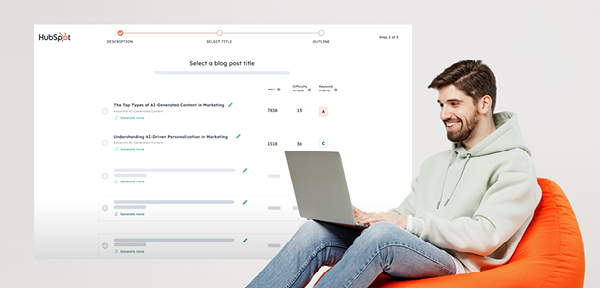
MVP or VIP?
That brings us back to our original question: Is HubSpot's Content Hub the most valuable player of your content marketing team? Our experience shows that it can be a very important player greasing your content wheels —with you in the driver’s seat to define the strategy and goals, refine the messaging, customize it to your brand, and add those crucial finishing touches. It’s a valuable addition to the HubSpot platform that can simplify and streamline both the creation and management of your company’s content. Ready to give it a try? Ask our HubSpot expert for a demo.Why HubSpot and ABM go together like hummus and pita?
By
Liron Ramot
, 22/01/2024
Discover the powerful synergy between HubSpot's Inbound Marketing and Account-Based Marketing (ABM) in our blog. Inbound sets the foundation for a robust ABM approach, attracting a broader range of prospects. Learn how HubSpot's ABM tools facilitate quick strategy setup, collaboration, attraction of high-value accounts, and effective tracking.
min read
If you’re a fan of hummus, you’ll know that it goes great with pita. While you can eat them separately, they are quite simply, better together. The one really complements the other. The same can be said of HubSpot’s Inbound Marketing methodology and Account-Based Marketing (ABM).
To make sure we’re all on the same page, let’s start by defining these methodologies:
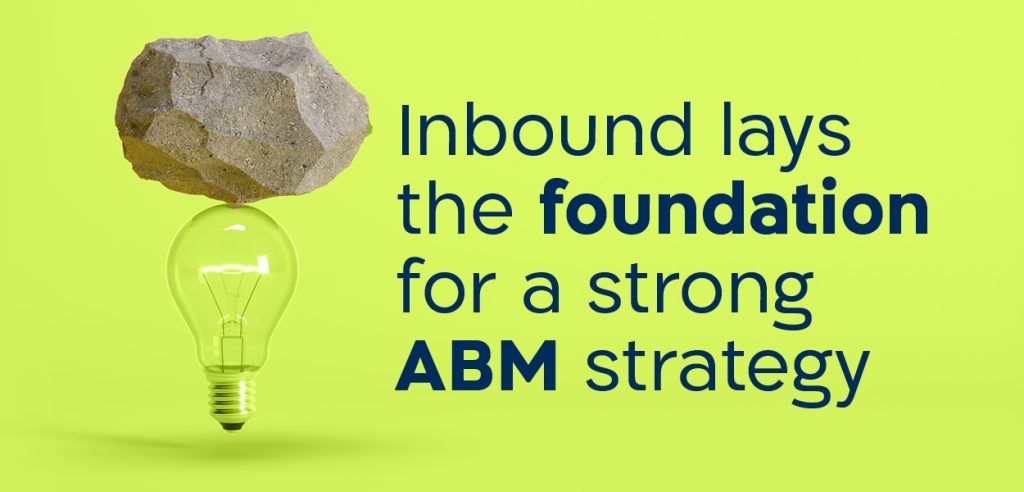
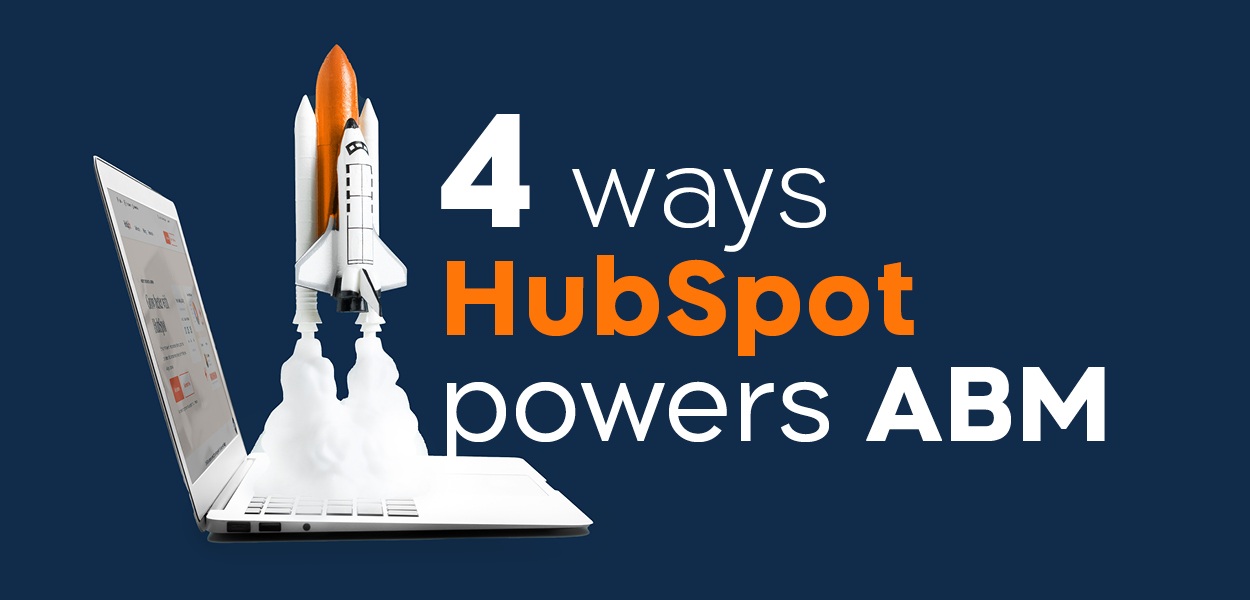 1. Set up ABM strategy quickly and smoothly
1. Set up ABM strategy quickly and smoothly
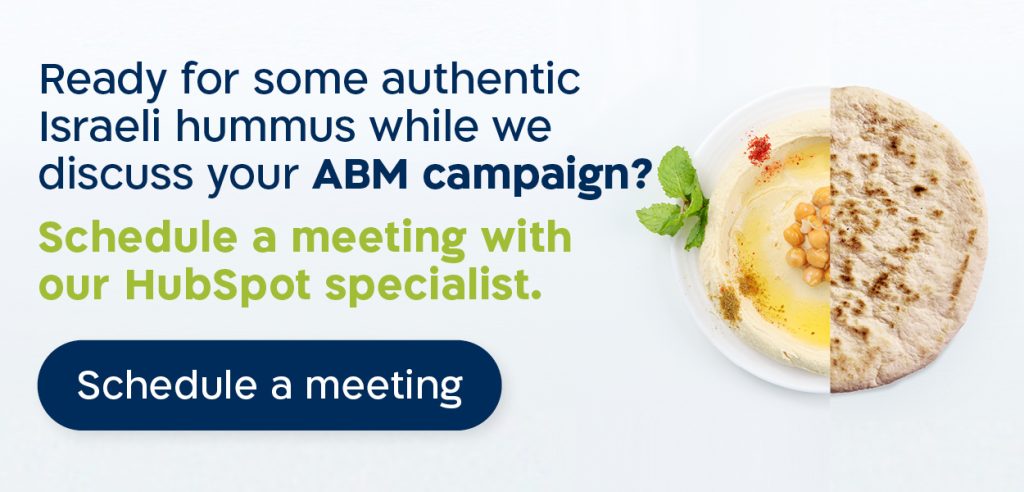
Inbound Marketing
Attracts customers by creating valuable content and experiences tailored to them. It’s about building meaningful relationships with consumers, prospects, and customers.Account-Based Marketing
A B2B strategy in which marketing and sales work together to create personalized buying experiences for a select set of high value companies.
Inbound lays the foundation for a strong ABM strategy
According to HubSpot, inbound marketing helps you attract contacts associated with your target accounts. ABM accelerates the flywheel (the cyclical marketing funnel comprising attract, engage, and delight) so you can win and delight your target accounts by providing a standout customer experience. By using inbound, you’re able to carry out highly-targeted allocation of the most relevant resources to your high-value accounts. As a B2B marketer, by using this combined approach you can attract a broader group of prospects than you would if you were only using one method.Double up and deliver value
Your carefully crafted content has a two-for-one value. You can create and use content that serves both your ABM and inbound strategy. As an example, once you’ve created a personalized case study for a target account, you can also share on your website.Leverage account-based marketing tools
HubSpot’s ABM tool makes it easy to implement ABM and inbound strategies in a complementary way. Its CRM platform connects all of your sales and marketing data and allows enables customer-centric automation and personalization. It makes it easy to use data to segment and target your accounts and marketing automation to nurture your buyers or buying committee and hand over your leads to sales. 1. Set up ABM strategy quickly and smoothly
1. Set up ABM strategy quickly and smoothly
- Use workflow templates to define your ideal customer profiles and identify good-fit target accounts
- Set up default properties to tag accounts and buying roles
- Leverage AI-powered recommendations of target accounts
- Use shared tools that unite your teams around the same data in the same place
- Use the Target Accounts feature to obtain a bird’s eye view of progress across all target accounts
- Use Slack to support high-value target accounts, post KPIs, and share notes
- Personalize content and tailor how you engage with stakeholders within an account
- Use account-level targeting in LinkedIn Ads integration to target companies by account status or tier
- Deepen your relationships over time & build connections with stakeholders within each account
- Use the account overview feature to understand what’s happening at an account level
- Employ out-of-the-box ABM reporting dashboards to get a higher-level view
- Obtain a higher level view using company scoring to identify the highest value accounts and prioritize reachout

Spice up your SEO strategy with HubSpot
By
Liron Ramot
, 12/12/2023
Optimizing your website for search engines is crucial. Explore how HubSpot’s SEO Marketing Software simplifies the process. From SEO recommendations to content strategy creation and seamless integration, HubSpot streamlines your SEO efforts. Leverage its tools to define target audiences, research topics, and organize keywords.
min read
You’ve peppered your website content with all the keywords you want to rank for. Yet your site still isn’t appearing in Google search rankings, not to mention Bing. It may be time to rethink your SEO strategy.
A quick reminder: SEO stands for Search Engine Optimization. It primarily drives two things: rankings and visibility — and it helps you position your brand throughout the entire buyer’s journey. When you plug your keyword into a search engine, it brings up a Search Engine Results Page (SERP). What happens next has a lot to do with how well your site is optimized for SEO.
To ask an existential question: If your company doesn’t rank on the first ten search results, does it even exist in the mind of your potential buyer?


How is your website ranked?
Google’s algorithm changes daily, but as a general rule of thumb, it ranks your website on three main factors: on-page SEO, off-page SEO, and technical SEO.- On-page SEO — covers three key areas:
- High-quality content (the heart of on-page SEO)
- HTML (source code including page titles, headers, meta descriptions, image alt-text, and more),
- and site architecture elements (such as page URLs, internal linking, and more).
- Off-page SEO — social sharing, external linking, and more.
- Technical SEO — structured data, site, speed and mobile readiness.
Don’t procrastinate, automate!
Why waste time, money and manual work when HubSpot SEO Marketing Software does it all for you? It can help you plan your SEO strategy, optimize your content, and measure ROI in three key steps:- Get SEO recommendations to optimize your site- Obtain recommendations ranked in order of priority which show which optimizations will have the biggest impact
- Create an optimized content strategy to build search authority- Obtain topic suggestions based on relevance, competition, and popularity and create high quality content around your core topics
- Integrate your SEO software with HubSpot’s content management tools- Obtain search keyword data, choose canonical URLs, get estimates on which topics will yield organic traffic gains, and track key topics on your dashboard
Get topical!
As the SEO project leader, you need to decide on each page’s target audience, goal, topic, and target keywords and phrases. HubSpot’s SEO tools make it easy to research and organize topics and subtopic keywords based on your company’s areas of expertise, which serve as the foundation for all the content you create for your website. Creating relevant and up-to-date content helps your website get indexed more accurately by search engines such as Google, which analyze keyword phrases in your content, title, meta description, hyperlinks, and more.Key tips to getting started with SEO
- Crawl your website, conduct an SEO audit, and define your site architecture.
- Establish a value proposition for every page and review and edit your content accordingly
- Target your audience for that specific page (if it differs according to market segment, application, or product category)
- Update your URLs, page titles, and meta descriptions.
- Making sure that your keyword/s are included in your URL and are used throughout the page
- Incorporate and optimize relevant visual content
- Add internal and external links
Why use HubSpot for SEO?
If haven’t yet made our case for why HubSpot takes the pain out of SEO and adds the gain, here are a few more good reasons to check it out: You don’t need to be an SEO expert, because its built-in SEO tools are built with marketers in mind. There’s no need to know coding either. HubSpot handles the technicalities, so you can focus on content. Here too, HubSpot has a variety of content planning tools built into the platform. It makes it really easy to connect your marketing assets so you can track the buyer’s journey — from awareness to qualified lead to happy customer.How AI Powers Your Marketing & Sales Engine
By
Liron Ramot
, 03/10/2023
Ready to supercharge your inbound marketing game with AI? Say "Aye!" If you're a HubSpot user looking to boost your content creation and sales processes, we've got something exciting for you. Discover how AI can be your secret weapon! Curious to learn more? Click the link to unveil the full potential of HubSpot's AI tools and start revolutionizing your marketing strategy today.
min read
If you’re already using HubSpot to fuel your inbound marketing strategy and drive sales, it’s time you took AI out for a spin
Constantly writing content to fuel your inbound marketing funnel can be time-consuming and costly. While ChatGPT isn’t going to replace your talented content team anytime soon (if at all), it can prove very useful in helping your team conduct research, generate content ideas, and write basic drafts for your team to finetune — so that you can generate more content, faster. It also helps your sales teams focus on closing deals instead of being bogged down by manual tasks. As a HubSpot user, it’s all your fingertips.Say goodbye to writer’s block
Having trouble generating the volume of content you need? Call on HubSpot’s friendly Content Assistant to create or refine web copy, blogs, articles, emails, and more. Using AI, you can generate ideas, outlines, or paragraphs for your required topics. You can also generate sales emails, titles and meta descriptions for pages and posts, and social posts. Simply answer the prompt, “What’s this social post about?” review the result, and tweak until you’re satisfied the post meets your standards. Not writing in English? Set the target language for the required content. Once a language is set, any generated text will automatically be output in that language.Four ways to tweak existing content
Using the “highlight” command, you can rewrite, expand, summarize, or change the tone of the text you’ve highlighted. It’s quick and efficient. Rewrite - Generates different wording for the highlighted text Expand - Elaborates on the content of the highlighted text Summarize - Condenses the highlighted text Change tone - Rewrites the highlighted text in the selected tone: friendly, professional, witty, heartfelt, or educational Beyond using the highlight command, you can also generate headings, paragraphs, and subsections based on your existing content. Clearly describe the content you require and select the required output. Remember to be very specific, use simple language, and provide examples to clarify the context and tone of your request. If at first you don’t succeed, try, try again. Experiment with different prompts until you get the output you need.Best practices for AI-generated content
- Always proofread and edit all your content before you publish it.
- Maintain your brand's voice and style – your tone of voice must be consistent through all marketing materials.
- It’s not all or nothing — remember to balance your AI-generated content with human-generated content.
- Check, check, and check again. While HubSpot has put security measures in place, content assistant may occasionally generate inaccurate, skewed, inappropriate, or misleading information. Make sure you verify the accuracy of the output's content, particularly any statistics or facts.










